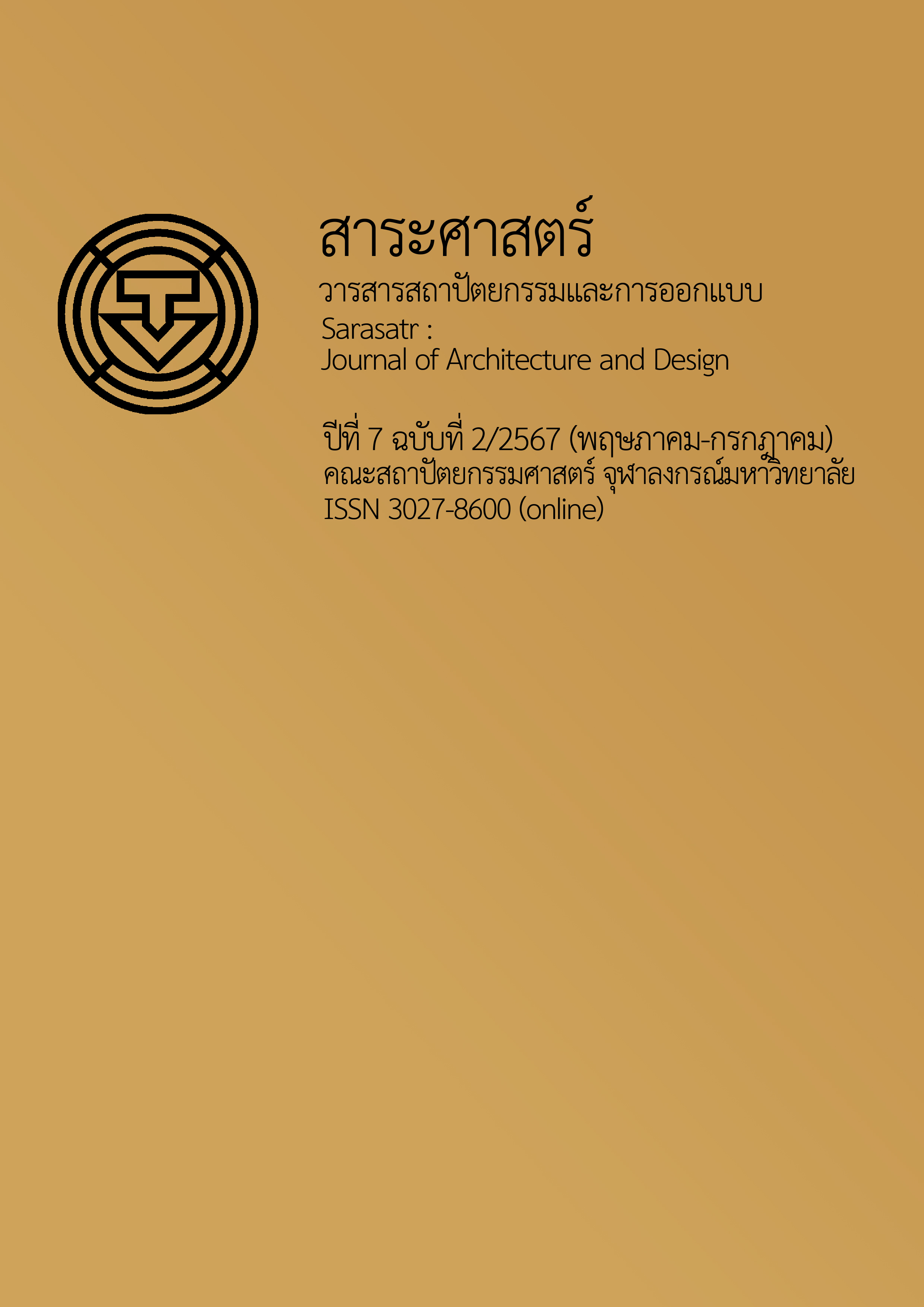ผลกระทบจากการแทรกแซงของการค้าออนไลน์ต่อพฤติกรรมการขายสินค้า ในตลาดดั้งเดิม : กรณีศึกษา ตลาดกิมหยง อำเภอหาดใหญ่ จังหวัดสงขลา
Main Article Content
บทคัดย่อ
บทความนี้เป็นการศึกษาพฤติกรรมการขายสินค้าของผู้ประกอบการในตลาดกิมหยง ซึ่งเป็นตลาดดั้งเดิมที่มี
ลักษณะพิเศษแตกต่างจากตลาดดั้งเดิมทั่วไปในมิติที่มีกลุ่มลูกค้าหลักเป็นนักท่องเที่ยว ในช่วงเวลาภายหลังการแทรกแซง
ของการค้าออนไลน์ โดยเปรียบเทียบพฤติกรรมการขายสินค้าของผู้ประกอบการในตลาดกิมหยงระหว่าง 3 ช่วงเวลา ได้แก่ ช่วงก่อนการเข้ามาของการค้าออนไลน์ ช่วงภายหลังการเข้ามาของการค้าออนไลน์ และช่วงภายหลังการแพร่ระบาด
ของเชื้อไวรัสโควิด-19 ด้วยวิธีการเก็บข้อมูลแบบสอบถามและการสัมภาษณ์ผู้ประกอบการในตลาด ผลการศึกษา พบว่า ปัจจุบันผู้ประกอบการในตลาดกิมหยงมีช่องทางการขายสินค้าแบบออนไลน์ (ขายทั้งหน้าร้านและออนไลน์) ร้อยละ 56.3
โดยผู้ประกอบการบางส่วนปรับตัวเพื่อรับกับการเปลี่ยนแปลงพฤติกรรมของผู้บริโภคที่เกิดขึ้น โดยปรับสัดส่วนช่องทาง
การขายสินค้าจากออฟไลน์เป็นออนไลน์ อย่างไรก็ตาม ด้วยบริบทของตลาดกิมหยง ซึ่งเป็นตลาดที่มีลักษณะพิเศษมีกลุ่มลูกค้าหลักเป็นนักท่องเที่ยว แม้ผู้ประกอบการในตลาดจะเปลี่ยนพฤติกรรมมาขายสินค้าผ่านออนไลน์มากยิ่งขึ้น แต่กลับพบว่าสัดส่วนยอดขายและสัดส่วนของจำนวนลูกค้าเกินครึ่งหนึ่งยังคงมาจากการขายสินค้าหน้าร้านในตลาด (รูปแบบออฟไลน์)
Article Details
เอกสารอ้างอิง
ศุภชัย ชีววัฒนาพงศ์. (2553). มาถึงหาดใหญ่ คิดถึงกิมหยง. วารสารข่าว มหาวิทยาลัยหาดใหญ่, 12(32), 3.
ศจิกา ถาวรวิริยะนันท์. (2560). ผลกระทบจากการขยายตัวของร้านค้าปลีกสมัยใหม่ต่อร้านค้าปลีกแบบดั้งเดิมในพื้นที่ตำบลมาบยางพร อำเภอปลวกแดง จังหวัดระยอง [วิทยานิพนธ์ปริญญามหาบัณฑิต]. Burapha University Research Information (BUUIR). http://ir.buu.ac.th/dspace/bitstream/1513/101/1/59930052.pdf
อรดา รัชตานนท์, กชพรรณ สัลเลขนันท์, โชติพัฒน์ กลินสุคนธ์, จิรวัฒน์ ภู่งาม, และมณฑล ศิริธนะ. (2564). ผลกระทบจากธุรกิจ e-commerce ต่อผู้ประกอบการท้องถิ่น. ธนาคารแห่งประเทศไทย.
Accenture. (2021, April 1). How will COVID-19 change the consumer? https://www.accenture.com/za-en/insights/retail/how-will-covid-19-change-consumer
Bhatt, R., & Goyal, A. (2018). Effect of e-commerce on small and medium enterprises in India. Journal of Business and Management, 20(7), 11-22.
Chen, S., Li, X., & Zhang, Y. (2018). The impact of online marketplaces on buyer-seller relationships: Evidence from Taobao. Journal of Small Business Management, 56(2), 198-213.
Dai, B., Forsythe, S., & Kwon, W. S. (2014). The impact of online shopping experience on risk perceptions and online purchase intentions: Does product category matter? Journal of Electronic Commerce Research, 15(1), 13-24.
Ghosh, S., Liang, Y., & Sunder, K. (2019). Online marketplaces and consumer protection: Policy and regulatory challenges. Journal of Public Policy & Marketing, 38(2), 241-257.
Gururaja, B. I., & Kumar, S. V. (2021). A study on impact of Covid-19 on online shopping with reference to Mysuru City. Annuals of the Romanian Society for Cell Biology, 25(7). 14-30.
Hennig-Thurau, T., & Walsh, G. (2003). Electronic word-of-mouth: Motives for and consequences of reading customer articulations on the internet. International Journal of Electronic Commerce, 8(2), 51-74.
Jansen, M., & Gehrsitz, M. (2019). The impact of e-commerce on local markets. Journal of Urban Economics, 108, 84-95.
Kambil, A., & Van Heck, E. (2002). The economics of online markets and ICT-intensive supply chains. Communications of the ACM, 45(8), 83-90.
Katawetawaraks, C., & Wang, Y. (2011). Consumer behavior toward online food and grocery shopping: Attitude, perceived behavior control, and moderating effect of subjective norm [Paper presentation]. 2011 Proceedings of the International Conference on Management and Service Science. Wuhan, China.
Moon, J., Choe, Y., & Song, H. (2021). Determinants of consumers’ online/offline shopping behaviours during the COVID-19 pandemic. International Journal of Environmental Research and Public Health, 18(4), 1–17. https://doi.org/10.3390/ijerph18041593
Park, K., & Jeong, M. (2019). Online marketplace usage and its impact on offline retail sales: The moderating role of category product involvement. Journal of Business Research, 99, 523-533.
Roy, P., & Datta, D. (2022). Impact of COVID-19 on consumer buying behavior towards online and offline shopping. Journal of Emerging Technologies and Innovative Research (JETIR), 9(6), 678–686.
Senecal, S., & Nantel, J. (2004). The influence of online product recommendations on consumers' online choices. Journal of Retailing, 80(2), 159-169.
Venkatesh, V., & Brown, S. A. (2001). A longitudinal investigation of personal computers in homes: Adoption determinants and emerging challenges. MIS Quarterly, 25(1), 71-102.
Zhang, X., Hong, Y., & Gao, J. (2018). The impact of online-to-offline platform participation on retailers in traditional markets. Electronic Commerce Research and Applications, 30, 149-157.
Zhang, Y., & Liu, X. (2020). The effect of online marketplaces on offline retail prices: Evidence from China. International Journal of Information Management, 52, 102057.
Zheng, X., Ye, Q., Liu, S., & Tang, L. (2019). Exploring the impact of online marketplaces on traditional markets. Journal of Business Research, 99, 365-374.


